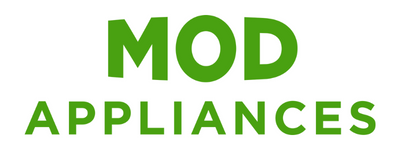How To Reduce Hay Fever Symptoms Naturally With These Foods
Spring, though a beautiful season, can be such a tough time for so many Australians. Based on the 2008 National Health Survey, allergic rhinitis, or more commonly known as hay fever, affects around 15% of the Australian population!
Instead of loading up on antihistamines, try changing your diet leading up to and including hay fever season, and see if you notice a difference.
We have done the research for you and listed below both foods that you should load your diet up with as well as some foods that are best avoided during this time.
What Foods Should You Eat To Help Combat Hay Fever?
Many of the unpleasant symptoms that come from hay fever are due to inflammation such as swelling and irritation in the eyes, throat and nasal passages. Therefore, increasing the foods that boast anti-inflammatory properties will help to relieve some of this discomfort. These include the following:
Ginger
Ginger contains the bioactive compound gingerol. Gingerol has powerful anti-inflammatory (and anti-oxidant) properties. Ginger in both the fresh or dried form contain gingerol.
Check out these recipes that contain ginger:
- Pumpkin Pie Smoothie
- Apple, Ginger & Lemon Juice
- Demi Green's Digestive Juice
Turmeric
The active ingredient, curcumin, reduces many inflammation-driven diseases and helps to minimise the swelling and irritation caused by allergic rhinitis.
Both fresh and dried turmeric contain curcumin.
Check out these recipes that contain turmeric:
- Tofu Brekky Wrap
- Add 1/2 tsp of dried turmeric to our popular plate sized pancake recipe
- Add a 1/3 tsp of dried turmeric to your porridge to make it a beautiful sunny yellow colour.
Coconut Oil
This is a great, easy to find anti-inflammatory oil which is great in baking, cooking and even adding to things like smoothies or porridge.
Check out these recipes that contain coconut oil:
- Juicer Pulp Muffins (switch out the canola oil for equal parts melted coconut oil)
- Cookie Dough Raw Balls (omit the chocolate chips - see why below!)
- Add a tablespoon of coconut oil to your frypan to cook our plate sized pancake recipe in the morning.
- Cheesecake bites
Herbs and Spices
A huge range of herbs and spices possess anti-inflammatory properties including:
- Parsley
- Sage
- Thyme
- Oregano
- Basil
- Cardamom
- Cinnamon
- Cloves
- Fennel seeds
- Nutmeg
Try adding these to your cooking. Cinnamon, cardamom, nutmeg and cloves are such lovely warming spices that are great to add to porridge or smoothies.
In addition to incorporating anti-inflammatory foods into your diet, aim to include a few of these foods below!
Bee Pollen
Bee pollen is now available in most health food stores and though it may seem counterintuitive to include something like this in your diet, some studies have found that by consuming pollen it actually helps the body to build resistance to these potential allergens and reduce allergy symptoms. It has a great taste and a little goes a long way. Try adding it as a topping on your breakfast or salad.
Try adding bee pollen to any of the following recipes:
Apples, Berries and Capsicums
Apples, all types of berries and capsicums contain quercetin which is a natural chemical that blocks histamines.
Try out these recipes:
- Apple, Ginger & Lemon Juice
- Berry sorbet in your MOD Cold Press
- Strawberry & Lemon Sorbet
Almonds, Cashews and Peanuts
These nuts all contain the mineral, magnesium. People who suffer from asthma often have low magnesium levels. Incorporating these nuts into your diet will help boost magnesium levels naturally.
Try out these recipes:
- Homemade nut milk
- Homemade nut butter (almond, cashew, peanut butter or a combination are all delicious)
- Choc Banana Smoothie (if avoiding cocoa or cacao powder, leave out - it will still be delicious)
As well as incorporating the above foods, try limiting your consumption of the following foods. These foods contain high levels of histamine, which can intensify hay fever symptoms.
These foods include:
- Tomatoes
- Eggplants
- Fermented goods such as vinegar, sauerkraut, yoghurt, miso, soy sauce and canned fish
- Chocolate (if you have a sweet tooth, try out our Cookie Dough Raw Balls and just omit the chocolate chips - they will still be super tasty!)

